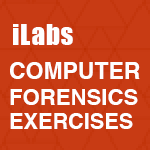Computer Forensics Exercises are available as part of the following subscription:
Each subscription provides 6 months of access to 34 Different Exercises. Each exercise contains a Scenario, Objectives, and individual step by step tasks to guide the user through all steps necessary to complete the exercise. The Computer Forensics Exercises are designed to give the user an ultimate hands-on experience. Each exercise category above has its own Virtual Private Cloud that comes preconfigured with Vulnerable websites, Victim Machines, and the environment is LOADED with tools. We even provide investigation files, hard disk clones and targets. Included in your network share are all the supporting tools required to practice in the Cyber Range / Lab environment.
Lab exercises are included for:
- Computer Forensics Investigation Process
- Computer Forensics Lab
- Understanding Hard Disks and File Systems
- Windows Forensics
- Data Acquisition and Duplication
- Recovering Deleted Files and Partitions
- Forensics Investigation Using AccessData FTK
- Forensics Investigation Using EnCase
- Steganography and Image File Forensics
- Application Password Crackers
- Log Capturing and Event Correlation
- Network Forensics, Investigating Logs and Investigating Network Traffic
- Investigating Wireless Attacks
- Tracking & Investigating Email Crimes
- Mobile Forensics
- Investigative Reports
Still looking for more information? No problem. Click any of the categories below to read a full description of the labs and exercises.
The computer forensics investigation process is a methodological approach of preparing for an investigation, collecting and analyzing digital evidence, and managing the case from the reporting of the crime until to the case’s conclusion….(Read More)
Overview of Computer Forensics Lab A computer forensics lab (CFL) is a designated location for conducting computer-based investigations on collected evidence….(Read More)
While investigating a computer-based crime, it is most important to understand hard disks and filesystems, as these are the major sources of data storage. People usually delete their tracks after committing a crime with a computer….(Read More)
Computer forensics is a broad concept that refers mainly to crimes committed with the use of computers. Various laws have been passed against cybercrime….(Read More)
Data acquisition is the process of gathering evidence or information. This can be done by using established methods to acquire data from a suspected storage media to get access to information about the crime….(Read More)
File and partition recovery allows you to recover critically important documents and other files that have been lost by accidental deletion, intentional deletion to conceal the evidence, a system crash, due to a virus…(Read More)
Forensics investigation involves the acquisition, preservation, analysis, and presentation of computer evidence. This type of evidence is fragile in nature and can easily, even inadvertently be altered, destroyed…(Read More)
EnCase® Forensic solution, lets examiners acquire data from a wide variety of devices, unearth potential evidence with disk level forensic analysis….(Read More)
The goal of steganography and image file forensics is to find images with steganographic content and detect hidden content within digital images (image files) in a forensically sound manner. Investigators need to….(Read More)
Password-protected files might be a hurdle in the investigation process, as forensic investigators need to crack the passwords to gain access to the locked files. Password crackers use two primary methods to identify correct passwords….(Read More)
Every device on a network generates some kind of logs for each and every action carried out on the network. Capturing and analyzing the log files are important tasks for investigating the security….(Read More)
Network forensics is the process of identifying criminal activity and the people behind the crime. Network forensics can be defined as sniffing, recording, acquisition, and analysis of the network traffic and event logs….(Read More)
A wireless network refers to any type of computer network that is wireless and is commonly associated with a telecommunications network whose interconnections between nodes are implemented….(Read More)
Investigating email crimes is the process of tracing, collecting, analyzing, and investigating the digital evidence and cyber trails. Digital evidence and cyber trails can relate to email spamming, mail bombing/mail storms….(Read More)
Description coming soon….(Read More)
An investigative report is a forensics report that defines the details of an incident, contains all information required to explain the conclusion, and holds legal inspection. It is used to communicate the results of the forensic investigation….(Read More)





